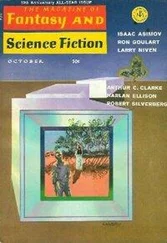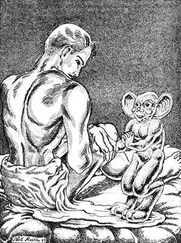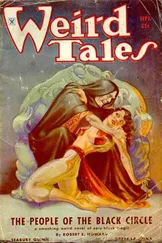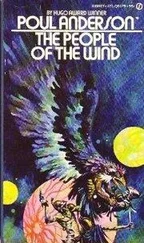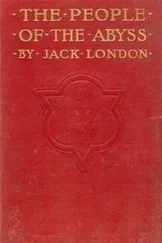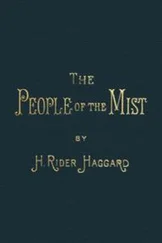“He’d have been about seventeen when he was married,” said Tallent later, his pen bobbing over his notebook. “So Ukavi was born shortly after he arrived, which means she’s approximately — what? A hundred and nine? A hundred and eight? Around there.”
But it was Ika’ana’s story that really made him and Esme excited. For Ika’ana, it emerged, had been born five years before the great earthquake, the one event that everyone on Ivu’ivu seemed to remember. This was a terrible catastrophe for the islands, felt as far away as Fiji to the west and Hawaii to the north. U’ivuan mythology explained it as a passionate lovers’ quarrel between Ivu’ivu and A’aka (over what, no one seemed to know), a war in which the gods, each determined to destroy the other, assaulted one another with all the weaponry they had, A’aka enlisting his siblings, the gods of the skies, to storm and rage on his behalf and Ivu’ivu riling the waters into towering waves, ones that reached so far into the sky they almost scraped the sun. After it was over, the two never fought again, in part (so the story went) because they realized their powers were evenly matched and one would never be able to overwhelm the other, and in part because their old and long-suffering friend Opa’ivu’eke had begged them to stop, and neither god could bear to see him made unhappy by them. In U’ivuan, the earthquake was known as Ka Weha: the Fight.
“I was a small child during Ka Weha,” said Ika’ana to Tallent. “But I remember how the ground beneath me split and cracked like a no’aka fruit, 33and how my mother ran with me into a nest of lawa’a ferns and held me until the gods stopped their arguing. And I remember how when we made our way back to the village, the cooking fires had spread and the male’es were on fire, and how my mother said we were lucky it was the beginning of ‘uaka because the rains would soon be coming and we would be safe. That night we prayed and danced to the gods and their happiness, and there has never been another fight since.”
He said a great deal more, and although Tallent leaned forward, asking questions and writing and writing, he translated nothing else for me, and when I asked him what else Ika’ana had said, he only looked thoughtful and said he needed to think about it for a while.
“Think about what?” I asked, but he didn’t answer.
But anyway, the important part: Ka Weha had taken place in 1779. Ika’ana was therefore about 176.
“He can’t be,” I protested, the panic rising up again, nearly choking me.
“It’s 1950,” said Tallent, calmly but with a slight edge to his voice; he was growing frustrated with me. “He was five during Ka Weha. Math doesn’t lie, Norton.”
Math didn’t lie. But everything else did. Tallent was right about one thing, though: it was 1950. A few yards off, Ika’ana sat, slightly rheumy-eyed, eating his portion of Spam. Next to him sat Fa’a, his fingers fanning out and then closing again around his spear. And although I could have reached them in a few long strides, I still couldn’t have told you simply by looking who was the younger and who was the older, who was the madman and who was on my side.
21Of all the characters who have populated the last half century of anthropology, Paul Joseph Tallent (1916–?) is arguably both the most fascinating and the most unknowable. Thought to have been born to a mother of Sioux extraction, he was raised from a toddler at the St. Joseph’s Orphanage for Boys in the town of Cloud Prairie, just outside of Pierre, South Dakota (the town’s territory, if not its name, is now a suburb of the capital). St. Joseph’s was a Catholic orphanage with a disproportionately large number of Indian boys; it was known for training its charges in various vocations, including plumbing and carpentry. Tallent, however, attracted the attention of one of his teachers, a Brother Peter (his lay name was Michael Tallent, and it is from him that Tallent undoubtedly took his surname, as all of the boys at St. Joseph’s were automatically given the name of Joseph), who mentored him and secured him a scholarship to a Catholic boys’ boarding school in Pierre, St. Francis’s. Tallent excelled at St. Francis’s and went on to win admittance to first Dartmouth (A.B., 1937) and then the University of Chicago, where he received his Ph.D. in 1941 (like Norton, Tallent was granted an exemption from service, although it’s unknown on what grounds). He was indeed, as Norton notes, very handsome, a fact that contributed to the aura of heroic romance that later came to surround him.
Tallent was immediately considered something of a prodigy in his field, first at Chicago, where he stayed to lecture for three years after receiving his doctorate, and then at Stanford, which would become his permanent academic home. While
it seemed as unlikely as a dodo ever to fly. Tallent and I and our luggage shared room with crates and crates of supplies, but no other passengers; the engines were so loud that conversation was — I was relieved to discover — impossible, and so after smiling vaguely in my direction and writing in a notebook for an hour or so, he closed his eyes and napped.
I had never given much thought to my own appearance — my body was, until that point, a vehicle of utility, and not something I had ever even considered possible or in my ability to change or shape or perfect. But looking at Tallent — his hair and skin and eyes the same dark-gold, brandyish hue, his many teeth remarkably white and crowded, which gave his smiles a lupine affect — I was made unavoidably aware of my own flaws: my bunchy knees, my floury skin, my floaty puff of hair. It seemed both improbable and ludicrous then that Tallent and I should be of the same species, and cruel that he should be a mirror of human perfection against which I could only catalogue my deficiencies. I spent the rest of the flight staring at him, willing him to open his eyes and yet dreading it too, disgusted by the ache I felt and yet enjoying it too. When the plane at last at Chicago he found a mentor in the renowned anthropologist Leo DuPlessix, who was at the time studying the reproductive rituals of the Hawawa people, a small tribe that lived in the jungles of Papua New Guinea; he was no doubt responsible for Tallent’s intellectual leanings and fields of interest. It is thought that DuPlessix, who died in 1943, assisted Tallent in his first trip to U’ivu later that year, but this is not documented in DuPlessix’s papers so cannot be definitively stated.
Chief among the many frustrations Tallent’s later biographers and scholars would encounter was their subject’s lack of journals or papers of his own. Indeed, most scholars find it difficult to believe that Tallent, who was so scrupulous about documenting every detail while in the field, should not have left behind a personal diary, or at the very least correspondence. This absence, along with his work and his still mysterious disappearance (which Norton will discuss later), has naturally only heightened the intrigue that surrounds Tallent, and several historians have been at work for many years now trying to compile definitive biographies of his life. (Norton, who is among the people who worked with him the most closely and at the most significant period of his scholarship, is often approached by them for interviews and insights.) In my opinion, however, it seems a job more suited for a novelist than for a historian: among the unknowns of Tallent’s life are his sexual predilections, his parentage, the specifics of his childhood, his romantic life (if any), and, of course, the manner of his death. He has become fertile ground for conspiracy theorists of all make, and is even revered as something of a mystic among certain fringe elements of the liberal arts community.
22This was actually untrue. While Duff, who was at the time a lecturer in the Anthropology Department at Stanford (her specialty was Micronesian village life), had accompanied Tallent on his previous two trips to the island, she had never been known among her colleagues as a linguist, and her understanding of the language was considered by later U’ivuan scholars to be rudimentary at best. However, she was certainly not quick to correct any misunderstandings regarding her fluency.
Читать дальше

